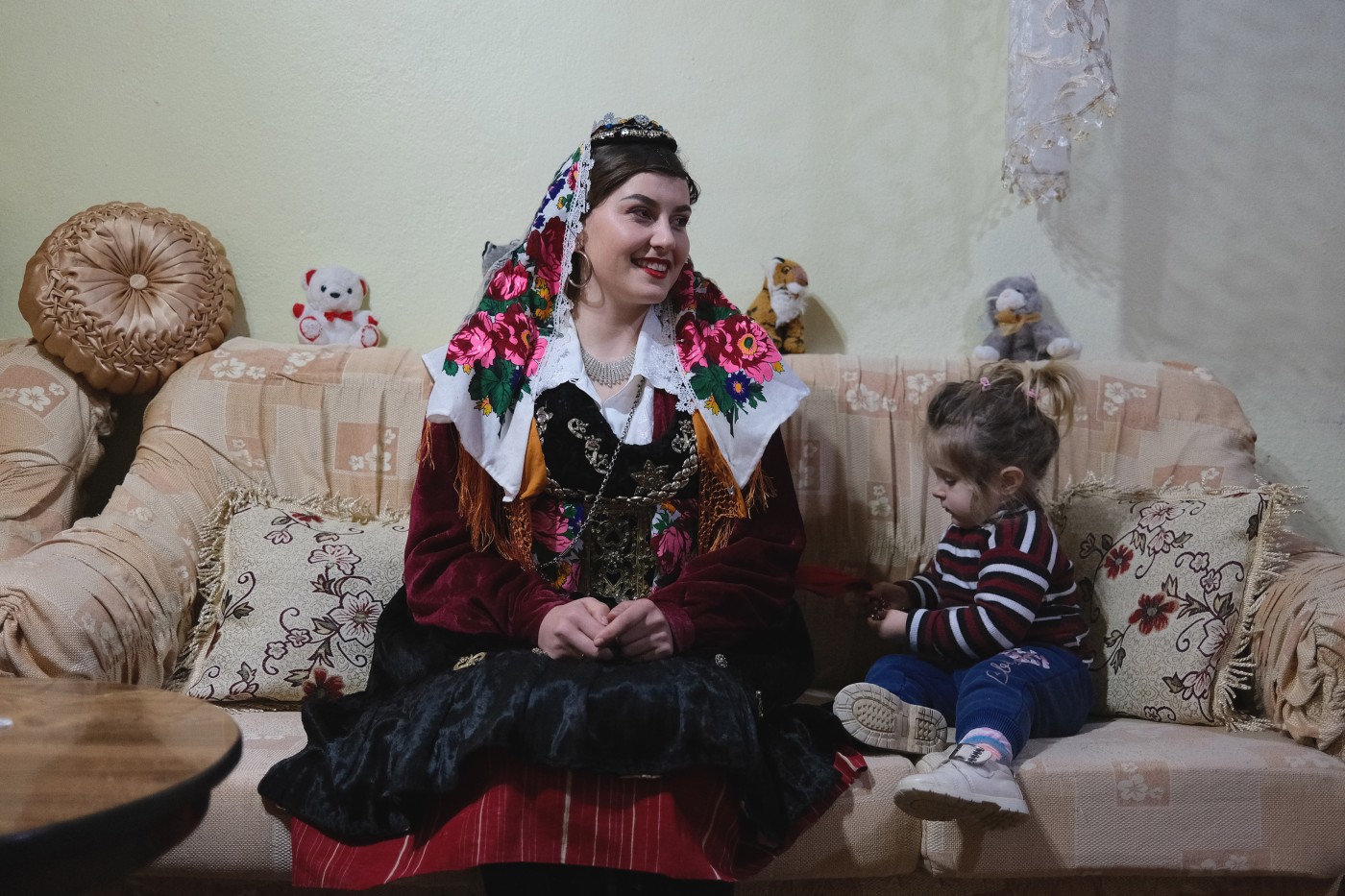
The Albanian Xhubleta
Today we are presenting a piece of Albanian culture dating back to the Bronze Age. This authentic piece of artistry was fortunately inscribed on the UNESCO Intangible Cultural Heritage List on 30 November 2022. It brings great delight to us Albanians, but more importantly a sigh of relief, to know that this important cultural asset now stands a chance of survival.
Embroidered with authentic Albanian elements
The first time you see Xhubleta you notice the amazing attention to detail, starting with the intricately knitted authentic Albanian elements such as the eagle and the religious influences, the faith in God, the traces of the
Catholic religion and the beauty of Albanian women. What sticks with you, on the other hand, are the symbols, dispersed all over the outfit. Shaped like a bell in most versions, the Xhubleta is embellished with a gajtan (a twisted ribbon on the side of garments, mainly used for decorative purposes or to prevent the fringe from sticking out) and layers of shajaks (a coarse, four-ply woven wool fabric used to make outerwear for rural areas.). Its top starts with the silk scarf worn on the head, continues with an elaborate artisanal vest which is sometimes
accompanied by a cloak, then comes the gajtan worn as a belt around the waist, and a beautiful long skirt with strong waves accompanied by knee-high socks. Its archaic features have always attracted a lot of curiosity, especially from foreign researchers.

The interesting symbolic language of the Xhubleta
Xhubleta of Malësi e Madhe is a representative piece of Northern Albania, but even more so, a clear heritage of our Illyrian culture, the only means through which we unfold the lost history of our nation, the only trace that shows the identity of the Albanian nation, through motifs whose most visible emblem is the eagle. I can mention Mrs. Luljeta Dano, who wrote many articles about Xhubleta while also promoting the inclusion of Xhubleta in the UNESCO List of Intangible Cultural Heritage. In her article “The symbol’s language in Xhubleta” she goes into the depths of heraldry and explains some symbols such as the icons that are supposed to protect the wearer; the “strong” waves of the skirt, which represent the valleys and the mountains (the northern Albanian nature); the numbers, the letters, the colors and the transcendental aesthetics.
Years of practice until perfection
The “brave” artisans who took on the difficult task of recreating the Xhubletë have expressed the great responsibility that comes with it. They studied it for more than ten years before committing to bringing it onto the scene, and they still are very attentive not to jeopardize any feature of the medieval clothing. Being very close to this particular piece of history, some of them have concluded that although the messages carried by Xhubleta can be perceived as cultic, they still convey a developed mindset for the time. Dr. Moikom Zeqo, a noteworthy albanian historian and academic, who refers to Xhubleta as a palimpsest of scriptures, has shed some cultural light and insight into the history of Xhubleta by referencing Sir Arthur Evans who, during his 19th century travels in the Balkans, discovered some clay artifacts that pertain to women (goddesses) that are strikingly similar to Xhubleta, underscoring its importance to European history.

A garment for a lifetime
Interestingly, Xhubleta was worn by women throughout their lives, but its appearance differed according
to the stage of life, showing the social characteristics of girlhood, womanhood after marriage, and so on. Understandably so, this piece of cloth is much more than just a provincial epochal manifestation.
To learn more about the Xhubleta, visit the official UNSECO website or watch this film made by UNESCO:
Share your CEE experience
Do you also have a travel tip, a recipe recommendation, useful business customs, interesting traditions or a story about CEE that you would like to share? Write to communications@rbinternational.com and share your experience.
Related News
Be the first
Subscribe to Raiffeisen Insights. Get an email with
the latest trends in the world of economics and business.
